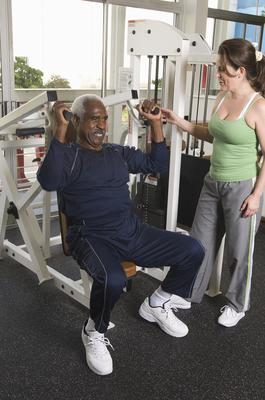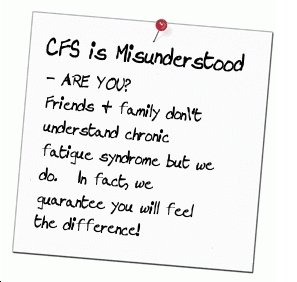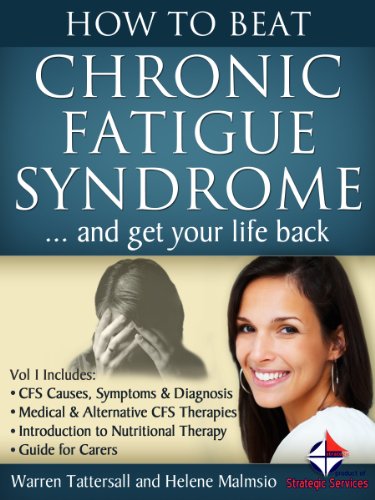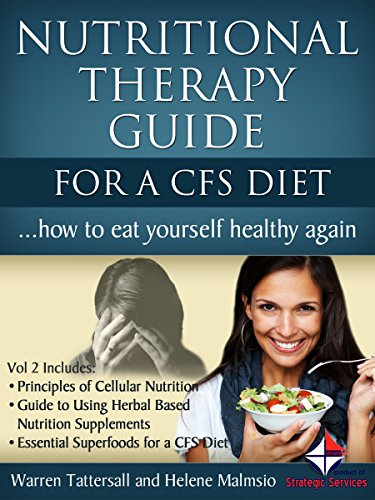The Secret to Working Out Without Increasing Your Back Pain
Today, your doctor is more likely to recommend exercise rather than bed rest for treating a sore back. Numerous studies have found that yoga or weightlifting can reduce back pain and disability dramatically.
On the other hand, if it hurts to move, you could be afraid to even lace up your gym shoes.
You may feel like you're trapped. You know that becoming stronger and more flexible will eventually provide relief, but it's difficult to begin the healing process.
Learn how to shape up without aggravating your aching back. You may be surprised at all the safe activities you can choose from.
Back-friendly Guidelines for Working Out
1. Talk with your doctor.
Back pain comes in many different forms, from a sprained ligament to sciatica. Your doctor can advise you on whether you need to exercise more or take a break.
2. Strengthen your core.
When you're ready to work out, it's essential to firm up your abdominals and other muscles in your torso that stabilize your entire body. You'll enhance your posture and lessen the strain on your lower back.
3. Increase circulation.
Blocked arteries may be causing discomfort in your lower back. Cardiovascular training will increase blood flow.
4. Stretch your hips.
Tightness in your hips can be a sign of pinched nerves. To open up that area and relieve the pressure, try gentle low lunges or rock back and forth while sitting on a foam roller.
5. Target your back.
As long as your doctor approves and your pain is less than severe, you can begin exercises that will strengthen your back. Training for flexibility and strength will speed up your recovery.
6. Enjoy the effort.
Changing your mindset makes any back condition easier to bear, especially if you've been sedentary up until now.
Distinguish between moderate exertion and overdoing it. It's usually okay to keep moving as long as you feel no acute strain. Find activities you like and invite a friend to join you.
Safe Exercises for Your Back
1. Take a walk.
Most doctors encourage walking for back patients, and it's often the first activity recommended after surgery. It offers many of the benefits of running with lighter impact, especially if you stick to soft surfaces.
2. Jump in the pool.
Water is also great for allowing you to move around without jarring your spine. You can jog or do aerobics in the pool, or just swim laps.
3. Practice yoga.
Yoga poses strengthen and stretch your body while they calm your mind. It can be an all-purpose solution for the emotional stress that comes along with a chronic back condition. Plus, poses like pigeon and lizard work wonders for loosening up your hips.
4. Use isometrics.
Isometrics are especially useful for rehabilitation because you contract the muscle without a large range of motion. Be sure to include a variety of movements and avoid holding your breath.
5. Buy an exercise ball.
Want an inexpensive and fun prop that will turn ordinary activities into effective exercises for your back?
Sit on an exercise ball while you're watching television or talking on the phone. Depending on your workplace, you may even be able to use it at your desk.
6. Try a new machine.
Treadmills can be hard on your back, but there are many other options. Take a look at elliptical machines or recumbent bicycles that provide many of the same benefits with less strain.
You can lead an active life without increasing your back pain.
In fact, strong muscles and good posture will lessen your symptoms and reduce future flare-ups. With regular exercise, you'll be able to manage your condition and resume doing the things you love.
Learn more about your health online when you read the rest of our information here about: Chronic Pain Management Guide and also download the free health report available there!
Warren Tattersall has been a full time nutritional consultant for over a decade and works with people all over the world to help them improve their health, increase their personal energy levels and to use supplements to assist with diet related health issues.
Just send him a note on the form here - Contact Us - to request a personal no obligation one-on-one consultation with Warren
New order website for Australian customers:
For all the subscribers that don't want to talk to anyone, just want to buy their products direct, I'm creating these websites that process orders for you once you register with them.
The Australia GoHerbalifeSite is the first one completed, other countries will come along soon...
Australian customers: Click this link or tap on the banner below to check it out and get registered to place your orders... and remember your 15% discount code: HLIntro15

Did you find this post fun, informative and useful? If so, please share it with others!
If you have a comment, question or suggestion, please leave a comment below!
A Quick Guide to Exercising Safely with Back Pain
When your back is aching, going to the gym may be the last thing on your mind. However, exercise is usually more beneficial than bed rest.
For years, doctors told their patients to lie down, but that thinking has changed. Moving promotes healing in several ways:
● You relax and strengthen your muscles.
● You increase your circulation, bringing more oxygen and nutrients to your spine.
● Plus, you boost your mood, which increases your motivation and helps you deal with the depression that sometimes accompanies chronic pain.
If you’re one of the 80 million Americans who report having back pain each year, exercise is part of the solution. Try these suggestions for protecting and strengthening your back.
Tips for Exercising with Back Pain
While working out can help you deal with a sore back, it’s important to be careful to avoid further injury. Design a gradual program that will keep you safe as you build your fitness.
Try these strategies:
1. Listen to your body.
A little discomfort is natural when you start exercising, especially if you’ve been sedentary for a while.
Discontinue any movements that cause sharp or persistent pain. Watch videos or work with a trainer to find safer substitutes.
2. Work your core.
Strong abdominals will help support your lower back. To avoid putting pressure on your sore spots, look for options like planks, bird dog, and bridge.
3. Check your form.
Maintaining proper posture is even more important when your back hurts. Tighten your core and avoid arching your back. Observe others at the gym or watch yourself in a mirror.
4. Warm up.
Start off gradually to raise your body temperature and protect yourself from injury. Ride a stationary bike at low speed for 5 minutes or swing your arms while marching around.
5. Stretch your muscles.
Increase your flexibility and range of motion. Instead of bouncing, do static stretches where you hold yourself in a comfortable position for 10 seconds or more. Be sure to warm up first or stretch at the end of your workout.
6. Lighten up.
Be gentle with yourself when you’re having a flare up. Choose low impact activities like water aerobics. Decrease the amount of weight you lift.
Other Suggestions for Preventing Back Pain
The rest of your lifestyle matters too. Your daily habits can help minimize discomfort and keep your spine healthy.
These techniques can help:
1. Straighten up.
Correct posture helps your back and your overall health. Familiarize yourself with the 3 natural curves in your back. Maintain them when you’re sitting and standing.
2. Sit less.
Prolonged sitting is a major cause of back pain, especially if you slouch. Get an adjustable desk that allows you to stand up for part of the day. Take breaks to walk around and stretch your body.
3. Eat healthy.
An anti-inflammatory diet is another powerful tool that promotes healing. Consume lots of vegetables, fruits, whole grains, and healthy fats. Minimize ultra-processed foods and red meat.
4. Sleep well.
Your mind and body need 7 to 9 hours of quality rest each night. How you sleep can also directly affect your back. Test different mattresses and sleep positions to see what works for you.
5. Lose weight.
Being overweight makes your body work harder. If you carry those pounds around your waist, they can also create a pelvic tilt that strains your lower back. Slim down with a balanced diet and an active lifestyle.
6. Manage stress.
Chronic tension is another source of inflammation. Enjoy relaxation practices like doing something you love or listening to music.
Physical activity plays an essential role in rehabilitating your back. Talk with your doctor about your individual needs and make safe exercises part of your regular routine.
the A to Z directory of dealing with Health Problems & Self Care Strategies for natural remedies to your health issues.

Subscribe to get your weekly "Health Success Magazine" with a new complete & comprehensive Health Report in every edition!

to “Your Health Success”
our weekly F’R’E’E’ Newsletter
If you would like a free no-obligation private consultation or to contact Warren Tattersall for more information, please click here >> Contact Us

Click the books above to learn more about how we treat CFS naturally, to get your life back!
You will find many assorted Health Reports available for download free to you on this website!
Our free Health Success Reports are each available for you to download when you subscribe to receive them and their 7 part eCourse.
You can unsubscribe at any time, but we are sure you will want to receive all the email lessons of these informative ecourses.
Read more HERE to select the REPORT subjects of most interest (or concern) to you.









